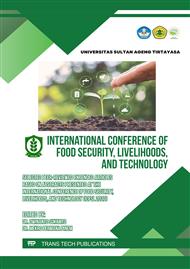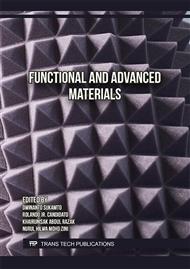[1]
D. Llewellyn, R. Hudd. Steels : Metallurgy and Applications. Third Edition. Reed Educational and Profesional Publishing (1998).
Google Scholar
[2]
M. Balavar, H. Mirzadeh. Enhancement of mechanical properties of low carbon steel based on heat treatment and thermo- mechanical processing routes. Journal of Ultrafine Grained and Nanostructured Materials. 51 (2018) 169-173.
Google Scholar
[3]
W.D. Callister, D.G. Rethwisch. Materials science and engineering: an introduction Vol. 7 (2007) 665-715). New York: John Wiley & Sons.
Google Scholar
[4]
M. Ferry, D. Muljono, D. Dunne. Recrystallization kinetics of low and ultra-low carbon steels during high- rate annealing. ISIJ international, 41 (2001) 1053-1060.
DOI: 10.2355/isijinternational.41.1053
Google Scholar
[5]
M. Gensamer, E.B. Pearsall, W.S. Pellini, J.R. Low. The tensile properties of pearlite, bainite, and spheroid. Metallography, Microstructure, and Analysis, 1(3-4) (2012) 171-189.
DOI: 10.1007/s13632-012-0027-7
Google Scholar
[6]
S. Mishra, A. Mishra, B.K. Show, J. Maity. Simultaneous enhancement of ductility and strength in AISI 1080 steel through typical cyclic heat treatment. Materials Science and Engineering A. 688: 262-271.
DOI: 10.1016/j.msea.2017.02.003
Google Scholar
[7]
D.K. Mondal, R.M. Dey. Effect of structures on the response to spheroidization in eutectoid plain carbon steel. Transactions of the Indian Institute of Metals, 37 (1984) 357-360.
Google Scholar
[8]
S. Dobatkin, J. Zrnik, S. Nikulin,T. Kovarik. Strength and ductility of medium carbon steel after equal channel angular pressing. In: Journal of Physics: Conference Series. IOP Publishing (2010) p.012127.
DOI: 10.1088/1742-6596/240/1/012127
Google Scholar
[9]
H.L.Yi, Z.Y. Hou, Y.B. Xu, D. Wu and G.D. Wang 2012. Acceleration of spheroidization in eutectoid steels by the addition of aluminum. Scr. Materialia, 67(2012) 645-648.
DOI: 10.1016/j.scriptamat.2012.07.020
Google Scholar
[10]
O'Brien, M. James, Hosford, F. William. Spheroidization cycles for medium carbon steels. Metallurgical and Materials Transactions A. 33 (2002)1255-1261.
DOI: 10.1007/s11661-002-0226-y
Google Scholar
[11]
T. Ogawa, H. Dannoshita, K. Maruoka, K. Ushioda. Microstructural Evolution During Cold Rolling and Subsequent Annealing in Low-Carbon Steel with Different Initial Microstructures. Journal of Materials Engineering and Performance. 26(8) (2017) 3821-3830.
DOI: 10.1007/s11665-017-2849-6
Google Scholar
[12]
Y.P Gul, M.A. Sobolenko, A.V. Ivchenko. Improvement in the Spheroidizing Annealing of Low Carbon Steel for Cold Upsetting. 42 (2012) 531–35.
DOI: 10.3103/s0967091212060058
Google Scholar
[13]
Y.J. Yin, J.Q. Sun, A.M. Zhao, J. Gou. Ultra-low-carbon steel spheroidization and torsion. Journal of Iron and Steel Research International. 25(9) (2018) 968-974.
DOI: 10.1007/s42243-018-0137-9
Google Scholar



